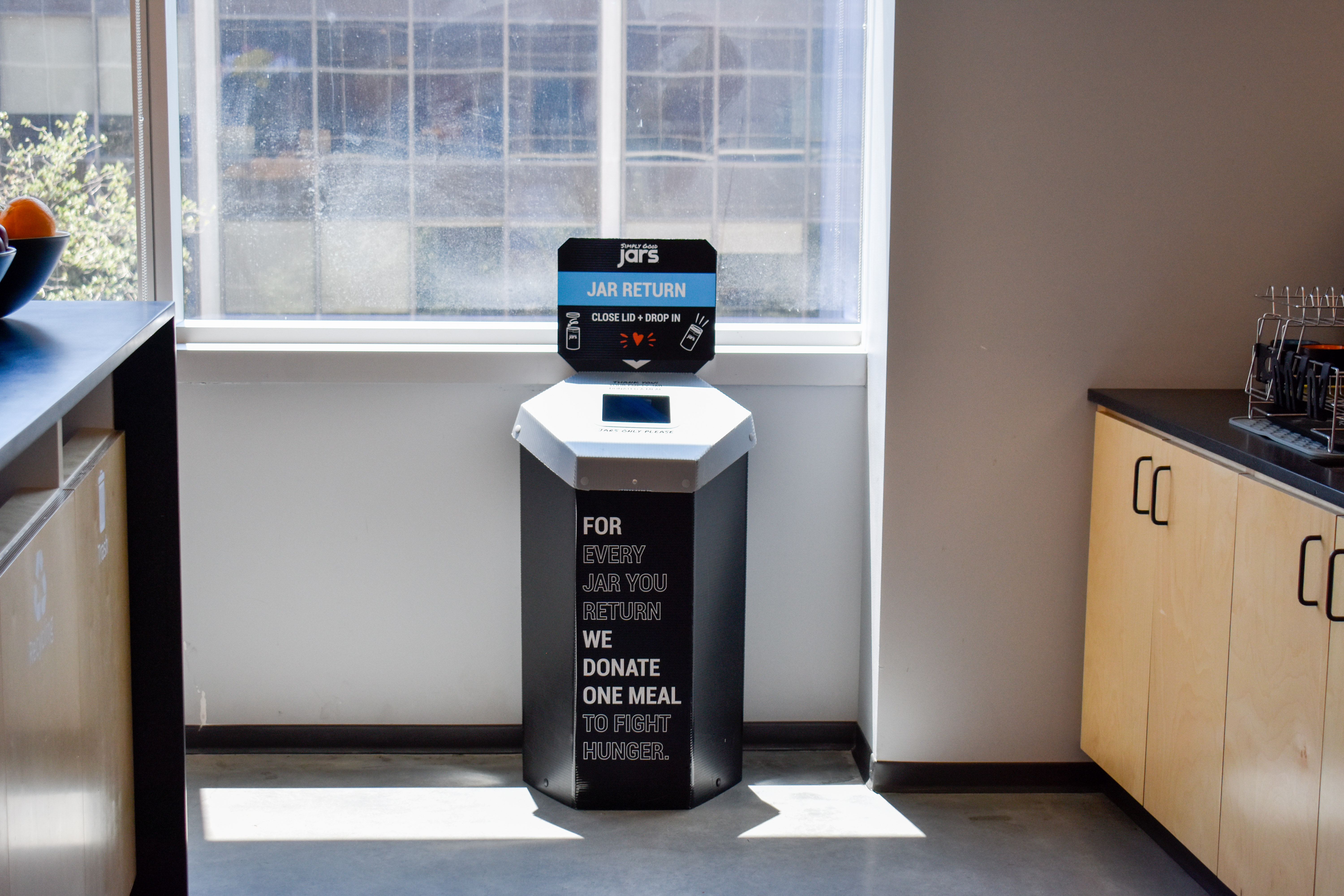Single use plastic has been a heated topic as of late. When you look at the shifting consumer demand for more convenient food, the topic becomes even more important. How do you begin to deliver on convenience without leveraging packaging that sets us back as opposed to propels us forward? We sit down with Simply Good Jars to see how they did just that.
Tell us about Simply Good Jars.
Simply Good Jars was founded on the ethos that we all need better, faster + easier access to the better options we all want, but often are too hard to find in our busy lives. We also wanted to approach business as a conduit towards challenging the status-quo + unbelievable wastefulness of single-use packaging, typically used for transporting quick food options. Through a chef-crafted approach, we produce and distribute fresh, delicious + healthy options right where our customers live-life.
Can you tell us about your Beyond Zero Waste initiative?
Zero waste is a wonderful goal, but we thought how much better would it be if we could go beyond zero? The idea came from Simply Good Jars founder, Jared Cannon wanting a real solution that extended beyond the SGJ organization.
As part of our Beyond-Zero Waste program, we encourage our customers to return empty jars back to us when finished to be cleaned and reused. For every single jar that is returned to us, we help to feed someone in need. This allows our customers to take a step beyond reducing waste + making more impact in their local communities.

Source: Simply Good Jars
What drove your decision in packaging?
There were many factors, but specifically for our product we wanted our packaging to mirror our brand standards of transparency (see-through), ease (portability) + durability (reuse). In the restaurant industry we use 32 oz plastic quart containers, that we wash and reuse; so the idea spun out of every-day use cases during my 18 year career growing fast-casual eateries + running massive foodservice operations from hotels, high-volume dining, fine-dining and quick service.
What were some challenges you ran into with the reuse program?
As you can imagine, early on it was pretty easy to do; but as we scaled business levels, we had to ensure that our business practices around our sanitation protocols allowed for confidence in our processes. So, very quickly, we started adding expenses for things like random lab-swab testing, proper containers to allow fast-drying and sanitation, in addition to the massive operation that is requires to wash 10,000 jars per month. So, like everything in #startuplife it’s all about iterating and ensuring that we anticipate everything as we charge forward in our mission to eliminate single-use plastic waste.

Source: Simply Good Jars
What are key operational components that must be in place to support a packaging reuse program?
As mentioned above, implementation of a reuse program centers around practices to ensure safety, sanitation and ideal processes. So, things like having lab analysis done multiple times per week, ensuring that proper sanitation practices are in place along with the proper facilities. And that’s just at the sanitation facility level. When transporting RPC’s (returned plastic containers) you cannot marry RTE foods with RPC’s as a process flow, so ensuring the supply chain is built to handle the collection process is also key.
How do you think about margin impact when it comes to this program versus using single use plastics?
For us it is more about redefining what profits should truly mean to an organization. We are doing far better things for the planet, our communities and our customers that have far larger impacts for the incremental costs of reuse over discarding.
For companies looking to reduce their reliance on single use plastics, what recommendations do you have on how they get started?
Just do it. Like everything else you will learn as you go. It’s all about learning and iterating. With that said, you must truly believe it’s the right thing to do, or you will never succeed. For us this has never been a marketing stint or strategy or way to entice or attract customers; it’s been about redefining profits, doing better business and taking a stance against the status quo to end the concept of single-use plastic in our world, simply because it’s the right thing to do.

